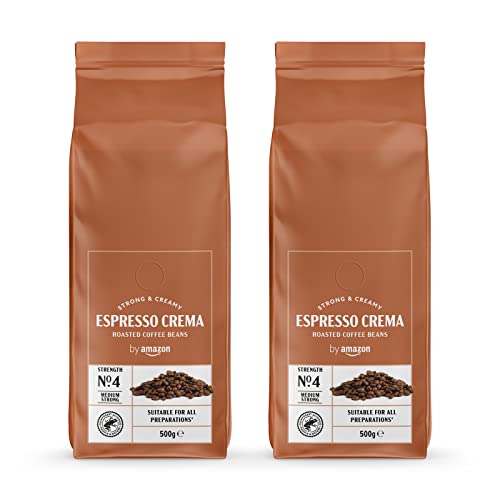Coffee Beans Types: 10 Things I'd Loved To Know Earlier

Coffee Bean Types: Arabica, Robusta, Liberica, and Excelsa

You've probably heard that different types produce distinct flavors. Read on to learn about four of the most sought-after varieties: Arabica, Robusta, Liberica, and Excelsa.
Excelsa beans, which are a variety of Liberica which is grown exclusively in Southeast Asia. They have a sweeter and tarter taste profile, and are often added to blends of coffee to enhance the flavor.
Arabica
Arabica is the most sought-after coffee in the world with 75% of all global coffee bean production. Arabica beans are sweeter and milder in flavor than Robusta and are available in a variety of flavor profiles. The flavor and aroma of coffee are influenced by the conditions in which it is grown and the processing methods employed.
The word "coffee" originates from the Arabic word that means the berry. Coffee beans are actually seeds that sprout inside bright red berries. It is believed that the ancient Ethiopian shepherds discovered that their goats were more energetic after eating the berries, and the cultivation of coffee quickly became widespread across the globe.
Coffee beans can be grown at high altitudes, and they are capable of thriving in cold temperatures and plenty of rain. This is one of the main reasons that Arabica is regarded as the most delicious coffee.
Many specialty coffee roasters and shops insist on using ethically-sourced arabica beans, by emphasizing fair wages for farmers and sustainable cultivation practices. These companies often blend arabica beans to create unique coffees that work well with a wide range of brewing methods. Blending gives control over the taste, aroma and body of the coffee. It is usually utilized to create an even and balanced taste that appeals to a broad market.
Robusta
Robusta beans (Coffea canephora) are the second most popular type of coffee bean grown in the world. They have more caffeine per bean and are more protected against pests and diseases. They also contain higher levels of chlorogenic acids, which are naturally-occurring antioxidants. These acids can cause oxidation in the coffee brewing and produce undesirable flavors.
The plant itself is more durable than arabica and is able to grow in less favorable climate conditions and at lower elevations. coffee beans bristol can tolerate higher temperatures and thrives in direct sunlight. It is faster growing and produces more coffee per plant than arabica, making it a cheaper crop to cultivate.
Although it might seem odd Robusta beans are frequently blended with arabica beans to create coffee blends. If you've noticed the names of countries like Uganda or Kenya listed on a bag of coffee then it's likely that there's a bit of robusta as well.
The majority of roasters make use of a mix of arabica and coffee beans to reduce costs and ensure quality. To preserve the integrity of flavor it is recommended to select a high quality bean from a trusted source. The best way to achieve this is to buy your beans directly from the farmer.
Liberica
Liberica beans are more or less football-shaped that makes them different from other types of coffee beans. They are characterized by a smell that is fruity, floral and smokey. They are often added to other coffee bean types to provide them with a more rich and more robust taste.
Liberica coffee beans can be found in West Africa, Malaysia (Borneo), and Southeast Asia. They are tolerant of hot, humid climates and can grow at low altitudes. They also have a much better resistance to diseases than Arabica and Robusta.
These attributes make them ideal to grow at home. Online, you can buy the seeds from various sources. However, it's ideal to purchase the beans from local producers in order to guarantee quality. The ideal conditions for growing Liberica coffee are fertile deep volcano soils, with moderately acidic and sufficient annual rainfall.
Another type of coffee bean is Excelsa which was previously considered to be a separate species but is now classified as a variant of Liberica. These coffee beans are ovals that grow on 20-30 foot coffee plants at moderate altitudes. Their distinctive flavor is tart and sour, which makes them a popular option for house blends. They are also lighter on scent and caffeine than Arabica and Robusta however they still possess a unique richness of flavor.
Excelsa
Excelsa coffee beans aren't as well-known as Arabica and Robusta even though they are the fourth most popular. In fact, they were considered a distinct coffee plant species until 2006 when they were reclassified to a synonym for Coffea liberica var. dewevrei. Currently, they're cultivated primarily in Southeast Asia and account for 7 percent of the world's coffee production. The coffee beans are shaped like teardrops and possess a dark, eerie taste. These beans are often used to give blends extra body and a sweet tart flavor of ripe fruits.
Arabica beans are by far the most sought-after and are renowned for their sweeter flavor. They thrive in tropical and warm environments and at high altitudes. They also have a bit of acidity. When roasted and brewed correctly, they can have notes like nuts, chocolate or even fruit.
Robusta is the second most popular coffee around the world. It accounts for about 40% of all coffee consumed in the world. Robusta is rounder and smaller, yet they contain twice the amount of caffeine as Arabica. They also have more bitterness than the other two varieties and are more likely to have woody and earthy undertones.
Now that you've learned the four most common types of coffee beans now is the time to pick the perfect coffee. If you want a smooth, delicate flavor, opt for an arabica bean or a blend of robusta and arabica beans.
